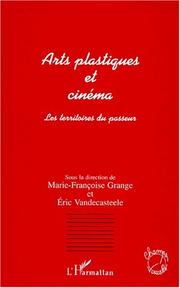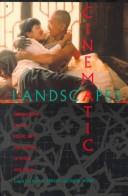| Listing 1 - 10 of 139 | << page >> |
Sort by
|

ISBN: 2738460534 Year: 1998 Publisher: Paris : Editions L'Harmattan,
Abstract | Keywords | Export | Availability | Bookmark
 Loading...
Loading...Choose an application
- Reference Manager
- EndNote
- RefWorks (Direct export to RefWorks)
Book
ISBN: 8888120521 Year: 2004 Publisher: Bologna : Gedit,
Abstract | Keywords | Export | Availability | Bookmark
 Loading...
Loading...Choose an application
- Reference Manager
- EndNote
- RefWorks (Direct export to RefWorks)
Book
Year: 1980
Abstract | Keywords | Export | Availability | Bookmark
 Loading...
Loading...Choose an application
- Reference Manager
- EndNote
- RefWorks (Direct export to RefWorks)
Book
ISBN: 9789461615701 Year: 2019 Publisher: Gand Snoeck
Abstract | Keywords | Export | Availability | Bookmark
 Loading...
Loading...Choose an application
- Reference Manager
- EndNote
- RefWorks (Direct export to RefWorks)

ISBN: 0292720874 Year: 1994 Publisher: Austin (Tex.) : University of Texas press,
Abstract | Keywords | Export | Availability | Bookmark
 Loading...
Loading...Choose an application
- Reference Manager
- EndNote
- RefWorks (Direct export to RefWorks)
Book
ISBN: 8806161172 Year: 2002 Publisher: Torino : Giulio Einaudi,
Abstract | Keywords | Export | Availability | Bookmark
 Loading...
Loading...Choose an application
- Reference Manager
- EndNote
- RefWorks (Direct export to RefWorks)
Book
ISBN: 9789004495005 9789042008113 Year: 2000 Publisher: Leiden; Boston : BRILL
Abstract | Keywords | Export | Availability | Bookmark
 Loading...
Loading...Choose an application
- Reference Manager
- EndNote
- RefWorks (Direct export to RefWorks)
In the 21st century, the screen - the Internet screen, the television screen, the video screen and all sorts of combinations thereof - will be booming in our visual and infotechno culture. Screen-based art, already a prominent and topical part of visual culture in the 1990s, will expand even more. In this volume, digital art - the new media - as well as its connectedness to cinema will be the subject of investigation. The starting point is a two-day symposium organized by the Netherlands Media Art Institute Montevideo/TBA, in collaboration with the L&B (Lier en Boog) series and the Amsterdam School of Cultural Analysis (ASCA). Issues which emerged during the course of investigation deal with questions such as: How could screen-based art be distinguished from other art forms? Could screen-based art theoretically be understood in one definite model or should one search for various possibilities and/or models? Could screen-based art be canonized? What are the physical and theoretical forms of representation for screen-based art? What are the idiosyncratic concepts geared towards screen-based art? This volume includes various arguments, positions, and statements by artists, curators, philosophers, and theorists. The participants are Marie-Luise Angerer, Annette W. Balkema, René Beekman, Raymond Bellour, Peter Bogers, Joost Bolten, Noël Carroll, Sean Cubitt, Cãlin Dan, Chris Dercon, Honoré d'O, Anne-Marie Duquet, Ken Feingold, Ursula Frohne, hARTware curators, Heiner Holtappels, Aernout Mik, Patricia Pisters, Nicolaus Schafhausen, Jeffrey Shaw, Peter Sloterdijk, Ed S. Tan, Barbara Visser and Siegfried Zielinski.
Book

ISBN: 9789462989467 9789048542024 Year: 2020 Publisher: Amsterdam
Abstract | Keywords | Export | Availability | Bookmark
 Loading...
Loading...Choose an application
- Reference Manager
- EndNote
- RefWorks (Direct export to RefWorks)
As the cinematic experience becomes subsumed into ubiquitous technologies of seeing, contemporary artworks lift the cinematic from the immateriality of the film screen, separating it into its physical components within the gallery space. How do film theorists read these reformulations of the cinematic medium and their critique of what it is and has been? Theorizing Cinema through Contemporary Art: Expanding Cinema considers artworks that incorporate, restage, and re-present cinema's configurations of space, experience, presence/absence, production and consumption, technology, myth, perception, event, and temporality, thereby addressing the creation, appraisal, and evolution of film theory as channeled through contemporary art. Taking film theory as a blueprint for the moving image, and juxtaposing it with artworks that render cinema as a material object, this book unfolds a complex relationship between a theory and a practice that have often been seen as virtually incompatible, heightening our understanding of each and, more pertinently, their interactions.
Art and motion pictures --- Motion pictures --- Philosophy --- Aesthetics --- Art and motion pictures. --- Philosophy.
Book
ISBN: 9782940159536 294015953X Year: 2013 Publisher: Genève: Mamco,
Abstract | Keywords | Export | Availability | Bookmark
 Loading...
Loading...Choose an application
- Reference Manager
- EndNote
- RefWorks (Direct export to RefWorks)
Si le cinéma s’est affirmé comme technique et comme référence pendant plusieurs décennies, il n’est plus un art aujourd’hui qui ne peut s’intéresser qu’à sa seule histoire. Il est une fenêtre parmi d’autres sur l’écran de l’ordinateur qui doit composer avec les autres arts. Son exposition de plus en plus fréquente hors de la salle de projection déplace le lieu de sa propre définition. Quelle est la nature de cette transformation ? Sommes-nous à jamais sortis du cinéma ? Rarement pensé dans son actualité, mais dans sa puissance, le cinéma n’est pas un art. Il le sera, dit-on, s’il sait contourner les obstacles du récit, du théâtre, du parlant, du commerce, de la couleur, de la télévision, du numérique. Promesse jamais tenue, toujours reconduite, qui engage une temporalité de nature prophétique. La question de la relation du cinéma aux arts doit être pensée sous le biais de ce lien temporel paradoxal qui se conjugue au futur antérieur. Sortir du cinéma explore les relations de l’art et du cinéma en étudiant ce qui n’a pas eu lieu, ce qui aurait pu avoir lieu, ce qui est resté sans suite, ce qui a été oublié, ce qui est devenu une pure virtualité. À la manière d’une contre-histoire, à rebours, ce livre privilégie les figures oubliées, les impasses, les seuils, les trous noirs, les fantômes, les rencontres sans suite, les anachronismes. Qu’en est-il du film de Hans Richter et Georges Méliès consacré au baron de Münchhausen ? Jean Epstein a-t-il lu Maya Deren ? Quand le cinéma est-il entré au musée pour la première fois ? Godard est-il surréaliste ? Joseph Cornell est-il un commissaire d’exposition ? Fluxus se présente-t-il comme une suite critique des films de Laurel et Hardy ? Orson Welles et Nicholas Ray sont-ils des artistes contemporains ? Le cinéma d’exposition est-il une anagramme du cinéma ? Cette enquête, au sens borgésien du terme, sur les relations virtuelles entre l’art et le cinéma, suppose un mode d’exposition dramatique qui ménage des tableaux et des scènes, qui fasse usage des figures de la rhétorique et de la prosopopée. Car il s’agit ici d’une métahistoire du film pour laquelle « donner une description précise de ce qui ne s’est jamais passé », selon Oscar Wilde s’annonce comme la tâche primordiale de l’historien.
Book
ISBN: 9789862161661 Year: 2008 Publisher: Taibei : Tian xia yuan jian chu ban gu fen you xian gong si,
Abstract | Keywords | Export | Availability | Bookmark
 Loading...
Loading...Choose an application
- Reference Manager
- EndNote
- RefWorks (Direct export to RefWorks)
Tim Yip, the art director of the motion picture "Red cliff" recorded in this book on how he and director John Wu produced the motion picture.
Art and motion pictures --- Chibi (Motion picture) --- Production and direction.
| Listing 1 - 10 of 139 | << page >> |
Sort by
|

 Search
Search Feedback
Feedback About UniCat
About UniCat  Help
Help News
News